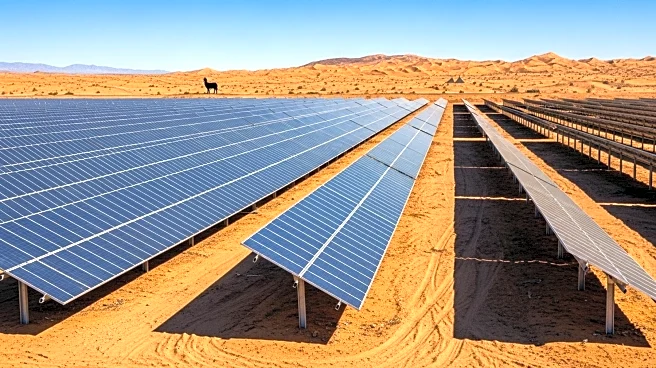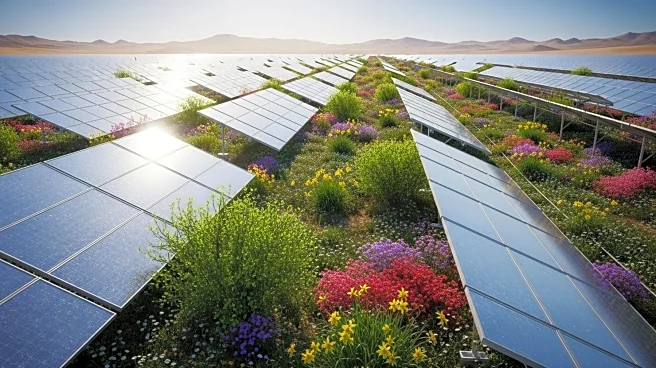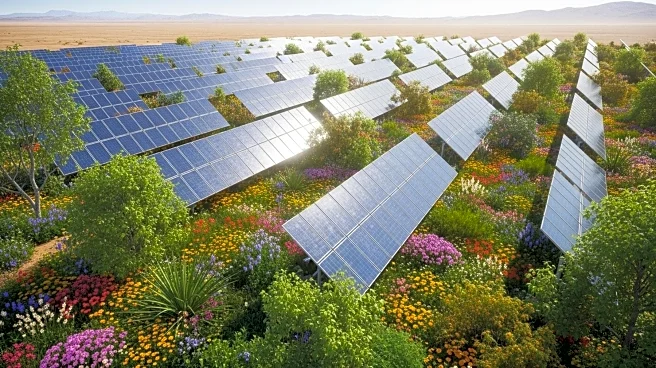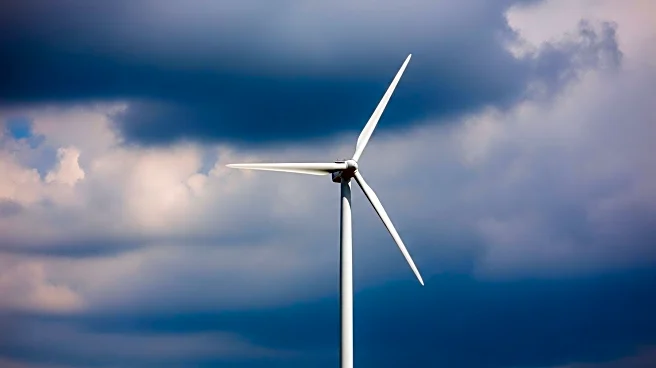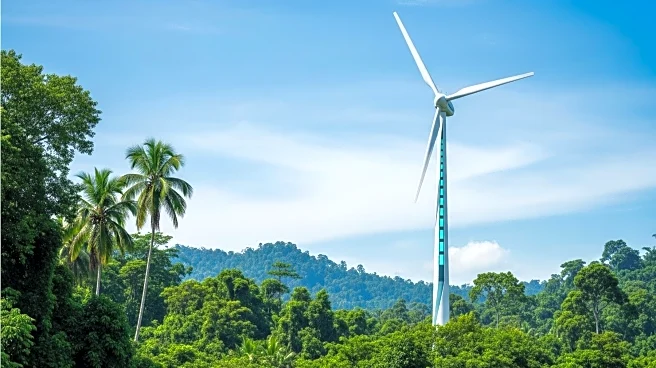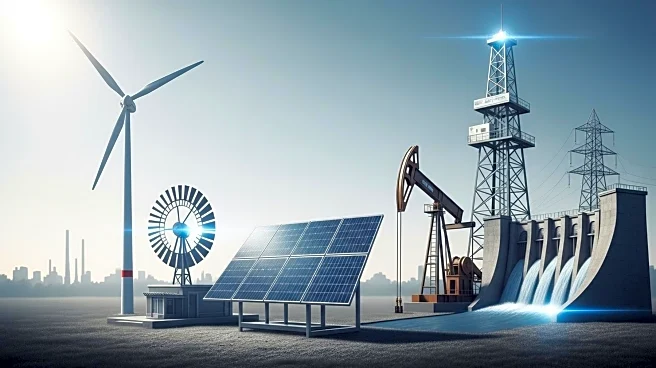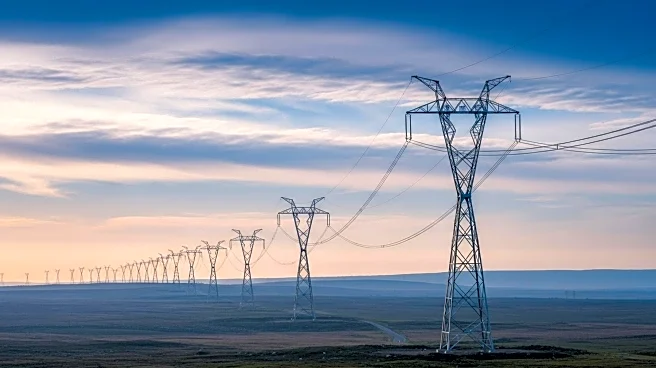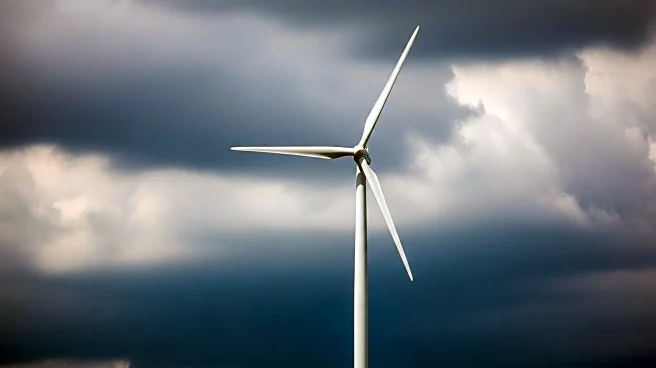What's Happening?
Recent research conducted by Chinese scientists has revealed significant ecological changes in desert areas due to large-scale photovoltaic (PV) development. The study focused on the Gonghe Photovoltaic Park in Qinghai Province, where solar panels have been installed in desert regions. The findings indicate that these panels are not only generating electricity but also reshaping the land by creating microclimates that support increased soil moisture and biodiversity. The panels' shade reduces surface radiation and evaporation, allowing vegetation to take root and microbial communities to thrive. This development suggests that solar farms could potentially serve as environmental lifelines in desert landscapes.
Why It's Important?
The implications of this study are significant for renewable energy and environmental restoration efforts. Solar farms traditionally viewed as energy sources are now being considered as tools for ecological recovery. This dual function could transform how deserts are perceived, turning them into areas that support both energy production and resilient ecosystems. The research highlights the potential for solar panels to contribute to environmental restoration, offering a promising approach to combat desertification and promote biodiversity. This could influence future policies and strategies in renewable energy deployment, particularly in arid regions.
What's Next?
While the initial findings are promising, the researchers emphasize the need for long-term monitoring to understand the full impact of solar panels on desert ecosystems. The success of this approach in Qinghai may not directly translate to other desert regions, such as the Sahara or the American Southwest, due to differing environmental conditions. Therefore, careful site selection and management are crucial. The study encourages a reevaluation of solar farm designs to maximize their ecological benefits, potentially leading to new standards in renewable energy projects.
Beyond the Headlines
This research challenges the traditional view of deserts as barren landscapes, suggesting that with strategic interventions, they can become vibrant ecosystems. The concept of 'agrivoltaics,' where solar panels are used to shade crops and stabilize soils, is already being piloted in China. This approach could redefine land use in desert areas, integrating energy production with agricultural and ecological restoration. The study opens up possibilities for innovative land management practices that balance energy needs with environmental conservation.
